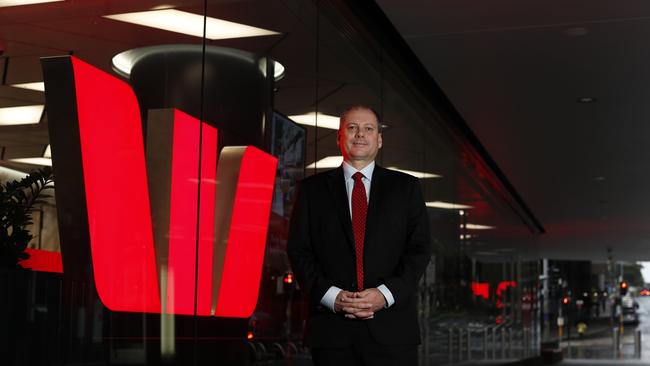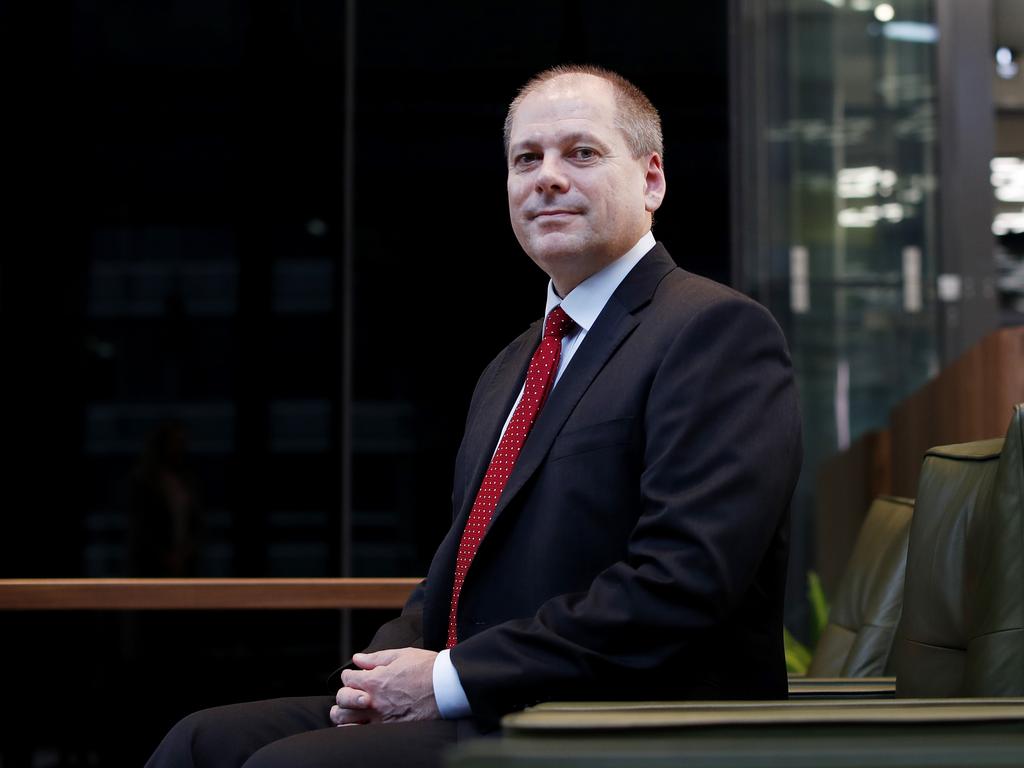Westpac warns on $1.4bn hit from Austrac and provisions, with COVID-19 impact to come
Westpac is warning a billion dollars in AUSTRAC costs, as well as COVID-19 provisions, will deliver a material hit to first half results.

Westpac is bracing for a turbulent 2020 after booking provisions and writedowns of $1.43bn in anticipation of a record financial crimes penalty, and warning that climbing loan losses would also dent profits.
The latest charges are the first of two hits to Westpac’s interim profit, with the bank to soon disclose its expected COVID-19 loan losses, before new chief executive Peter King hands down earnings on May 4.
Tuesday’s ASX announcement points to a markedly lower first-half cash profit for Westpac, and has some analysts suggesting it won’t pay a dividend and the loan impairment charge and provisions could print at $1.8bn.
The $1.43bn amount included a $900m hit due to an expected penalty to be paid to regulator Austrac over 23 million alleged breaches of financial crimes laws, and $130m in estimated additional costs related to Westpac’s response plan to the legal action.
The bank also ratcheted up the amount it has set aside for customer compensation, increasing it by a further $260m for additional provisions for customer refunds, payments, costs and litigation. That takes Westpac’s total provisions for customer refunds and payments to almost $1.59bn since 2017.
Westpac’s shares reversed early losses to climb 1.9 per cent to $16.27 on Tuesday, in line with gains in the ASX200.
“It’s a been a perfect storm for the banking sector but [Westpac is] far better placed to deal with the potential bad debts than any time in recent history,” Regal Funds Management portfolio manager Mark Nathan said.
“Companies are often reticent to disclose a provision for regulatory litigation as they don’t want to set a target for the regulator. As such, we can assume that Westpac is well progressed on reaching a settlement.”
Austrac lobbed legal action against Westpac in November over 23 million alleged breaches of the law, including failing to report international transfers, some of which were linked to child sexual exploitation in The Philippines.
The case led to the departure of former Westpac CEO Brian Hartzer and brought forward the exit of former chairman Lindsay Maxsted.
Rival Commonwealth Bank paid a record $700m settlement to Austrac two years ago for its own breaches of anti-money laundering and counter terrorism financing laws.
Westpac on Tuesday admitted the penalty estimate could vary widely, with the parties due to file a statement of agreed facts with the court by May 8. Its defence on outstanding matters is expected a week later.
Westpac’s common equity tier one ratio stood at 10.8 per cent at December 31, and Tuesday’s provisions and writedowns will impact its capital by about 30 bps.
“Having spent much of the last decade strengthening our capital we are well placed to respond to the unfolding environment,” Mr King said, reaffirming his commitment to fixing processes related to Austrac’s court action.
“In addition to closing relevant products and recruiting an additional 200 people in financial crime and compliance, I am putting in place a clearer accountability regime that will speed up decision making, improve implementation and more clearly define responsibility and its associated risk management.”
Westpac also said it was undertaking detailed analysis to finalise loan impairment provisions for its first half ended March 31, but it expects a “significant collective provision increase” due to the fallout of COVID-19.
Shaw and Partners analyst Brett Le Mesurier said Westpac’s earnings disclosures and the banking regulator’s dividend and capital guidance suggested it was “now likely” it would not pay an interim dividend. He also cautioned that bad debts could blow out.
“The company is now heading for a profit of $1.1bn in the first half of 2020, if the bad debt charge is $1.8bn, but it could be much more,” Mr Le Mesurier said.
Mr Nathan said the pandemic would see big banks follow Australian Prudential Regulation Authority guidance and either materially reduce or suspend dividends, while loan losses would rise again.
“It’s important to look through these losses to determine what the banking landscape will look like afterwards,” he added.
“APRA was pretty clear about dividends. Westpac may use this as an opportunity to again rebase its dividend payout.”
Westpac tapped investors in a $2.8bn capital call late last year alongside its annual results, and cut its final dividend by 14c per share to 80c.
Bell Potter analyst TS Lim expects Westpac to pay total dividends across 2020 of $1, and isn’t ruling out a “pre-emptive capital raising” to increase capital buffers.
ANZ kicks off the major bank reporting season late this month, followed by results from Westpac and National Australia Bank in early May.
In downgrading Westpac’s long-term rating last week, Fitch Ratings said the operating environment in Australia and New Zealand was “severely damaged” by the pandemic. It expects a large deterioration in the bank’s asset quality and profitability in the short to medium term.
Westpac’s provisions on Tuesday included asset writedowns of $70m after it reassessed the value of capitalised software costs and physical assets. The bank also wrote off about $70m relating to changes to the provision of group life insurance.
Westpac said its life insurance arm and BT Super intended ending their commercial relationship for group insurance, spurring additional costs. A reason was not provided for that change. The Australian last year revealed Westpac was considering joining its three major rivals in offloading its life insurance division, tapping JPMorgan to work on a potential sale.
In February, Westpac said that major bushfires and storms would add around $140m, net of reinsurance, pre-tax to insurance claims in its first half.






To join the conversation, please log in. Don't have an account? Register
Join the conversation, you are commenting as Logout